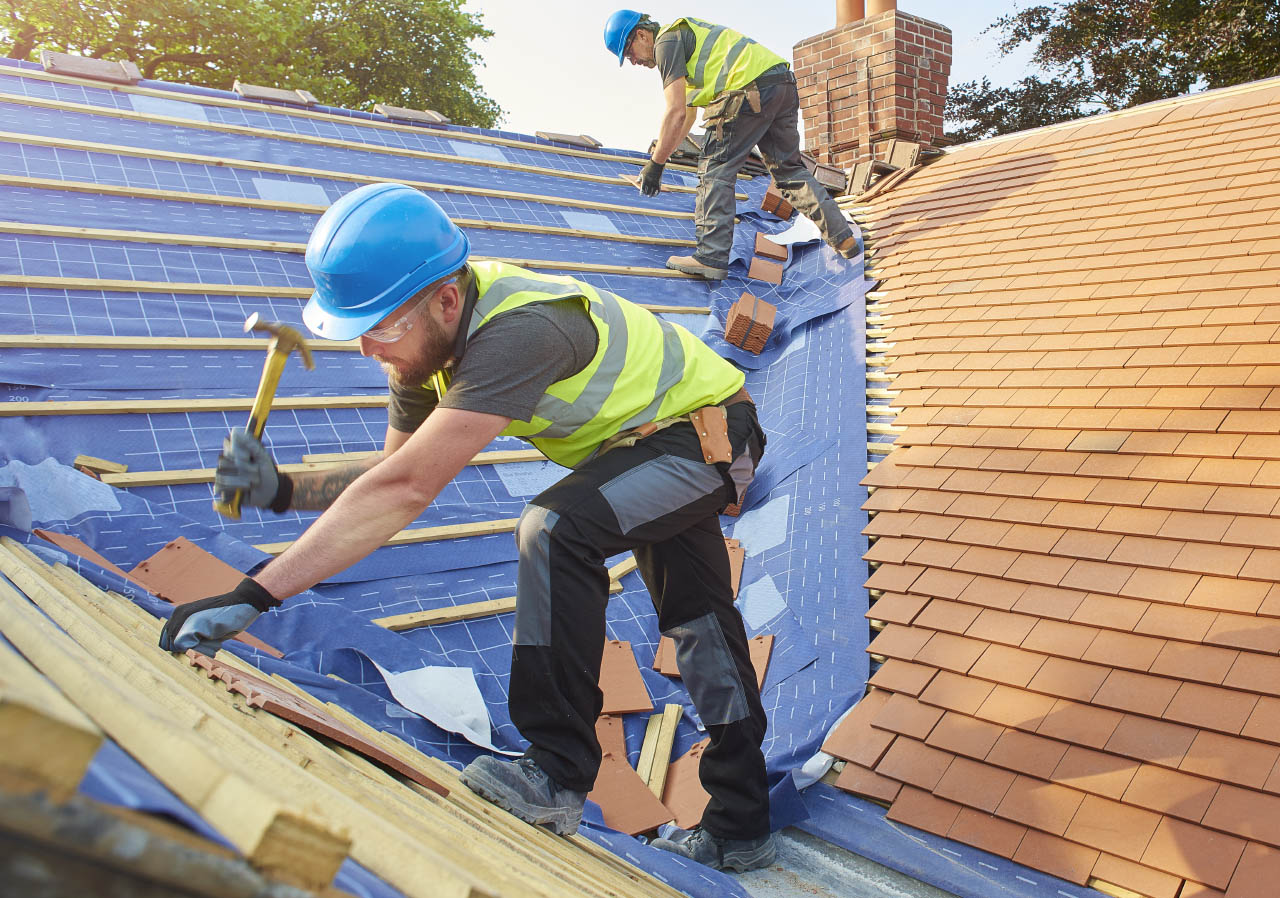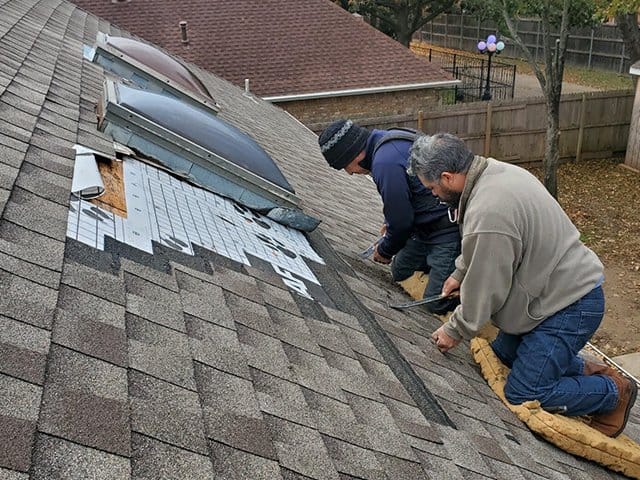Roofing Companies Oahu: Premier Roofers for All Roofing Projects
A Property owner's Overview to Types of Roofs: Choosing the Right Design for Your Needs

Popular Roofing Styles
When it comes to choosing a roof covering style, homeowners usually evaluate their choices very carefully to ensure both visual allure and functionality. Among one of the most popular styles are the gable, hip, and flat roofs, each offering visual features and distinct benefits.
Gable roofing systems, characterized by their triangular shape, are preferred for their simple style and reliable water drainage. This style is especially appropriate for regions with heavy rains or snow, as it minimizes the threat of water merging.
Hip roofings, which incline on all 4 sides, provide added security and toughness, making them an excellent option for locations susceptible to high winds. Their architectural complexity permits for better style adaptability and can boost the total curb allure of a home.
Flat roofings provide a modern visual and optimize useful outdoor space, making them prominent for urban setups. While they need even more upkeep to prevent water buildup, their streamlined look can enhance modern architecture.
Inevitably, the choice of roof style need to reflect the house owner's personal taste while taking into consideration elements such as regional environment, building style, and potential resale value. Each style contributes uniquely to a home's overall personality and performance.

Material Options
Choosing the suitable roof product is simply as vital as choosing the best style, as it substantially influences the roof covering's toughness, maintenance needs, and overall visual. roofers oahu. Home owners have a selection of options to take into consideration, each with special benefits and downsides


Asphalt roof shingles are among one of the most prominent products due to their price and convenience of setup. They generally last 15-30 years, depending on the top quality and upkeep. Metal roof gives phenomenal resilience and durability, frequently going beyond 50 years, while also being resistant and light-weight to fire and rot. Nonetheless, steel roof coverings can be a lot more pricey upfront.
Clay and concrete ceramic tiles offer a classic appearance and outstanding life expectancy but require a strong structure as a result of their weight. These materials are resistant and very sturdy to rough climate conditions. Wood shakes offer a rustic visual yet demand regular upkeep to stop rot and insect damages.
Lastly, synthetic roof materials, such as rubber or plastic composites, simulate the appearance of traditional materials while being low-maintenance and light-weight. Eventually, the option of roof material must align with the house owner's spending plan, desired lifespan, and upkeep choices, making certain an appropriate match for their particular demands.
Power Performance Considerations
Energy efficiency plays a crucial role in the general performance of a roof, influencing both ecological sustainability and house owner energy expenses. When choosing a roof covering, it is important to consider products and layouts that enhance energy efficiency. For example, reflective roofing materials, usually described as "great roofing systems," can considerably reduce warmth absorption, decreasing interior temperature levels get more and decreasing the demand for cooling.
In addition, the roof covering's color and slope can influence its energy efficiency. Lighter colors generally show much more sunlight, while outstanding pitched roofings assist in much better airflow, reducing heat accumulation - roofers oahu. Insulation additionally plays an important role; a well-insulated roof can stop warm loss in winter months and keep insides cooler in summer season, thus boosting energy financial savings
Additionally, integrating energy-efficient roof covering choices with photovoltaic panels can additionally reduce energy costs and dependence on nonrenewable sources. Home owners must also think about local climate conditions when picking roofing products and styles, as these factors straight impact energy consumption.
Upkeep Requirements
The long life and performance of a roof covering system are substantially influenced by the maintenance demands connected with its style and products. Various roof types this hyperlink demand varying levels of maintenance, which can influence both the property owner's time and spending plan.
Regular cleaning of seamless gutters is essential to avoid water damages and lengthen the roofing's life-span. These roof coverings also benefit from cleaning up to preserve visual charm and performance.
Floor tile roofs, recognized for their longevity, demand much less regular upkeep but require cautious inspection and replacement of harmed ceramic tiles. Flat roofing systems, although providing modern looks, often need more focus; they need routine evaluation for merging water and particles removal to prevent leaks.
Inevitably, recognizing the maintenance demands connected with various roof designs makes it possible for homeowners to make enlightened choices, guaranteeing the picked roof straightens with their way of living and dedication to upkeep. Prioritizing upkeep will certainly enhance the roof covering's efficiency and prolong its life span, offering assurance for years to come.
Influence On Resale Worth
When thinking about a new roofing system design, home owners must identify that the choice can substantially affect the building's resale worth. A well-chosen roofing system not just improves curb allure but also indicates to possible buyers that the home is well-maintained and structurally audio. Different roof products and designs carry differing levels of worth in the genuine estate market.
For example, asphalt tiles are prominent due to their cost and wide variety of shades, frequently attracting budget-conscious purchasers. Alternatively, a metal roofing, while extra expensive in advance, uses long life and energy efficiency, which can draw in purchasers seeking low maintenance and sustainability. In addition, distinct styles such as slate or floor tile can include a touch of high-end, possibly increasing the residential or commercial property's value in upscale markets.
Regional preferences also play a vital role; homes in areas with hefty snowfall may benefit from considerably pitched roofs, while seaside areas may favor sturdy products immune to deep sea rust YOURURL.com (roofers oahu). Ultimately, home owners need to consider both aesthetic charm and functional advantages when picking a roof. A thoughtful selection makes certain that the financial investment not just fulfills personal demands however also improves the residential property's marketability and resale capacity
Final Thought
In verdict, choosing the suitable roofing system style demands a cautious evaluation of numerous variables, consisting of regional climate, building layout, and upkeep demands. Each roofing alternative, whether it be gable, hip, or level, has unique advantages and disadvantages that impact power efficiency and possible resale value. Inevitably, a knowledgeable decision pertaining to roofing system choice can enhance the visual allure, functionality, and long life of a home, ensuring it continues to be an important asset for many years to find.
Selecting the proper roofing design for your home is a vital choice that can substantially affect both appearances and capability. While gable roofings excel in water drainage, hip roofing systems might supply greater resilience versus wind.When considering a brand-new roof style, home owners need to acknowledge that the option can considerably influence the building's resale value. Inevitably, property owners ought to think about both visual appeal and useful advantages when selecting a roofing.In verdict, choosing the suitable roof covering style requires a careful examination of numerous variables, including local climate, architectural layout, and upkeep needs.